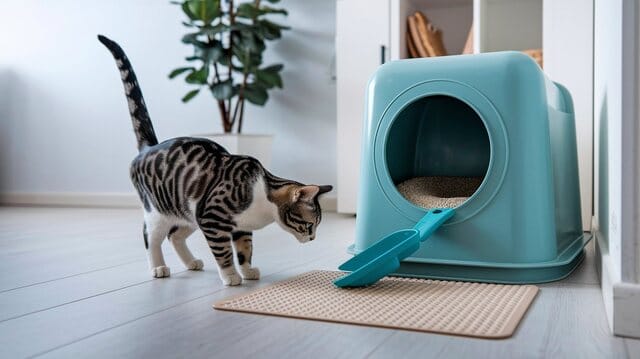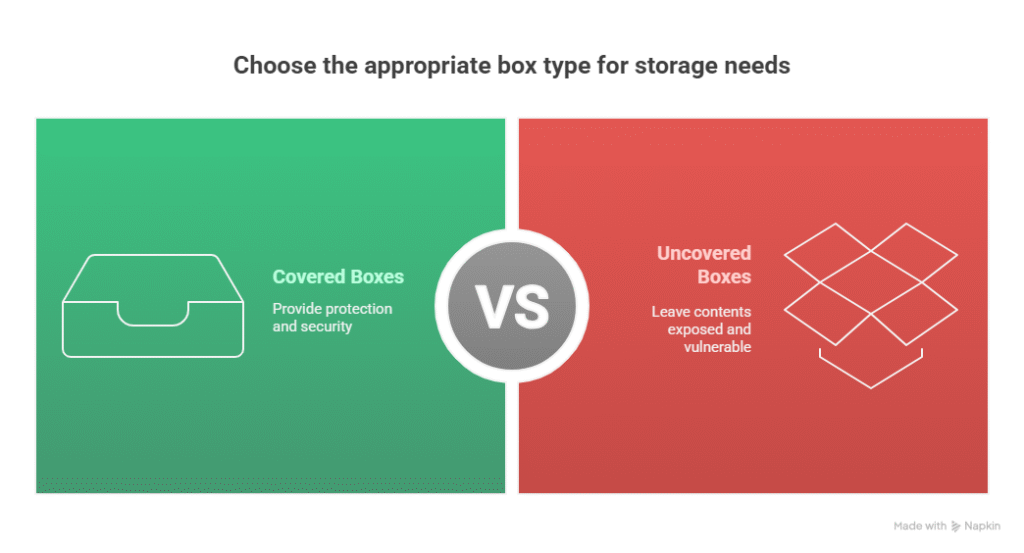
Introduction
Let’s be real—scooping a litter box isn’t anyone’s favorite chore. But as any cat parent knows, it’s one of the most important responsibilities that comes with feline companionship.
Yet, one question comes up again and again:
How often should I clean my cat’s litter box?
Is once a day enough? Should I dump the whole thing every week? Is there a “too often”? What about multi-cat homes?
Whether you’re a new cat owner or someone trying to improve their routine, understanding how often (and how thoroughly) to clean your cat’s litter box makes all the difference—for your cat’s health, your home’s cleanliness, and your peace of mind.
Let’s break it down with expert-backed advice, real-life solutions, and some tips to make the task feel a little less… stinky.
Why Cleanliness Matters: It’s Not Just About Smell
Keeping your cat’s litter box clean does a lot more than make your house smell better. It has a direct impact on your cat’s health and behavior, too.
Here’s why it matters:
- Prevents litter box aversion: A dirty box is one of the top reasons cats stop using it.
- Reduces odor: Especially important in small apartments or shared spaces.
- Supports urinary and digestive health: Cats are incredibly clean creatures—if their box is dirty, they may “hold it,” leading to UTIs or constipation.
- Helps you detect health issues early: Regular scooping lets you monitor stool consistency, color, frequency, and any blood or mucus—vital health indicators.
So, yes—while your cat may not write you a thank-you note, a consistently clean litter box is one of the greatest gifts you can give them.
How Often Should I Clean My Cat’s Litter Box?
Let’s get to the point. Here’s the ideal cleaning frequency, based on both veterinary advice and real-world experience:
🧹 Scoop the Litter: At Least Once a Day
Daily scooping is non-negotiable.
For one healthy adult cat, scooping once a day is the absolute minimum. Twice a day—morning and evening—is even better, especially in small spaces or if you’re using a box with limited odor control.
Why scoop daily?
- Removes urine and feces before odors build up
- Prevents clumps from sticking to the bottom
- Keeps your cat comfortable and stress-free
- Reduces the risk of litter box avoidance
If you skip even one day, you may find your cat choosing to do their business elsewhere—and once that starts, it’s hard to reverse.
🔁 Replace All Litter: Every 1–2 Weeks
Even with daily scooping, litter gradually absorbs:
- Odors
- Moisture
- Bacteria
How often you fully replace the litter depends on:
- Type of litter
- Number of cats
- Box size
- Scent sensitivity (yours and your cat’s)
General guideline:
- Clumping litter: Replace every 2 weeks
- Non-clumping litter: Replace weekly or more often
- Natural litter (corn, paper, wood): Follow manufacturer instructions—often needs weekly changes
Don’t just top off dirty litter with new—fully empty the box, wash it (more on that next), and start fresh.
🧼 Wash the Litter Box: Every 1–2 Weeks
Yes—you should actually wash the box itself, not just replace the litter inside.
Use:
- Warm water
- Unscented mild soap
- Optional: diluted vinegar rinse for odor control (avoid bleach!)
Why not bleach?
Strong smells can deter your cat from using the box, even if it’s clean. Cats prefer neutral or no scent over “lemon fresh.”
Dry thoroughly before adding new litter. Wet corners can cause new litter to stick and clump.
What If I Have More Than One Cat?
Cats are territorial by nature. Even the best buddies may not enjoy sharing a bathroom. For this reason, vets and cat behaviorists recommend:
One litter box per cat, plus one extra.
So for:
- 1 cat → 2 boxes
- 2 cats → 3 boxes
- 3 cats → 4 boxes
With multiple cats, you’ll also need to scoop more often—ideally twice a day per box, and consider changing the litter more frequently.
Tip: In multi-cat homes, label boxes by location and keep notes on any signs of disuse or accidents. This can help detect medical or territorial issues.
Does the Type of Litter Affect Cleaning Frequency?
Absolutely.
🧱 Clumping Clay Litter
- Forms solid clumps around waste
- Easier to scoop
- Lower odor if maintained
- Change every 2–3 weeks (with daily scooping)
🌿 Natural Litter (Wood, Corn, Paper)
- Eco-friendly but often less odor-absorbent
- May need weekly full changes
- Can be more prone to mold or breakdown in humid environments
🧊 Crystal/Silica Litter
- Absorbs moisture without clumping
- Low dust
- Great for odor control, but can mask issues like diarrhea
- Change every 1–2 weeks
Tip: Always read the packaging for brand-specific instructions, but don’t blindly trust “30-day odor control” claims—go by smell, scooping ease, and your cat’s preferences.
Covered vs. Uncovered Boxes: Does It Matter?

Yes, and here’s how:
🛑 Covered Boxes
- Contain odors better (temporarily)
- Trap heat and moisture—can increase ammonia smell if not cleaned often
- May discourage cats who don’t like confined spaces
- Require more frequent washing
✅ Open Boxes
- Easier to monitor and scoop
- May smell faster—but that’s actually a cleaning reminder
- Provide better airflow, less heat build-up
Covered boxes may seem more sanitary—but only if cleaned just as often, or more. Otherwise, they become bacterial breeding zones.
Signs You’re Not Cleaning Often Enough
Not sure if your current routine is cutting it? Here are signs your cat may disagree with your cleaning schedule:
🐾 Behavioral Clues:
- Peeing or pooping outside the box
- Standing on the edges only to avoid touching the litter
- Digging excessively or exiting rapidly
- Meowing while in or near the box
- Refusing to cover waste
👃 Smell Clues:
- Strong ammonia odor in the room
- Litter smells within a few feet of the box, even right after scooping
- Musty or sour smell from natural litters
👁️ Visual Clues:
- Litter looks wet, muddy, or sticky
- Waste clumps break apart easily when scooped
- Litter dust visibly clings to your cat’s paws or fur
If any of these happen, increase scooping to twice daily and wash the box more often. A fresh-smelling litter area makes for a happier, healthier cat—and a better-smelling home.
Tips to Make Litter Box Cleaning Easier
Let’s face it: nobody wants to clean the litter box. But these tips can help you make it faster, easier, and even semi-enjoyable (ok, maybe not… but less terrible):
✅ Use Litter Liners
- Great for quick changes
- Some cats dislike the crinkle, test and observe
✅ Keep a Trash Bin Nearby
- A small, sealable bin with a liner helps make scooping convenient
✅ Use Non-Stick or Enclosed Boxes
- Some boxes have non-stick coatings to reduce clump buildup
✅ Wear Gloves and a Mask
- Especially useful for asthmatic individuals or those sensitive to dust
✅ Set a Cleaning Alarm
- Daily scooping at the same time builds routine, for both you and your cat
Eco-Friendly & Health-Friendly Litter Tips
- Choose unscented litter: cats dislike heavy artificial fragrances
- Avoid clay litters with sodium bentonite if you want compostable options
- Use biodegradable liners or bags for waste disposal
- Never flush litter unless it’s specifically labeled as flushable
Common Mistakes to Avoid
Even experienced cat owners slip up sometimes. Here’s what to steer clear of:
❌ Skipping a Day Because It “Doesn’t Look Full”
Even if waste isn’t visible, odor and bacteria still accumulate.
❌ Topping Off Dirty Litter Instead of Replacing It
Leads to deep odor saturation and more work later.
❌ Using Harsh Chemicals to Clean
Bleach, pine oil, and strong citrus cleaners can repel cats or irritate their lungs and paws.
❌ Ignoring Behavioral Clues
If your cat is avoiding the box, cleaning it is the first step to fixing it.
FAQs
How often should I clean the litter box for one cat?
Scoop daily, change all litter every 2 weeks, and wash the box every 1–2 weeks.
Can I just scoop and not replace the litter?
No—ammonia builds up even in clean-looking litter. Always replace and wash periodically.
Is it safe to clean the litter box while pregnant?
You should avoid it if possible due to toxoplasmosis risk. If unavoidable, wear gloves and a mask, and wash your hands thoroughly.
Should I use baking soda in the litter?
Yes, in small amounts, it can help neutralize odor naturally. Avoid scented varieties that may irritate your cat.
Also Read - Why Does My Cat Lick My Ear? Understanding This Adorably Weird Feline Habit
Conclusion
So, how often should you clean your cat’s litter box?
In short:
- Scoop it every day (ideally twice)
- Change the litter weekly or biweekly
- Wash the box every 1–2 weeks
Your cat depends on a clean, comfortable space to do their business—and they’ll show their appreciation by using the box consistently, staying healthy, and keeping your home clean.
It may not be glamorous, but a clean litter box is one of the simplest, most impactful ways to care for your feline friend.
Because in the world of cats, nothing says “I love you” quite like a perfectly scooped box.





Absolutely, keeping the litter box clean is essential for both the cat and the owner. Daily scooping is a must to prevent any unwanted accidents around the house. It’s also important to fully replace the litter and wash the box regularly to maintain hygiene. Having one litter box per cat, plus an extra, can help avoid territorial issues. How do you manage to keep up with the cleaning routine, especially with multiple cats?
Absolutely! I couldn’t agree more about regular scooping and cleaning. With multiple cats, I keep cleaning supplies nearby and make it a part of my morning and evening routine. I also use clumping litter, which saves time. Have you tried any automatic litter box?